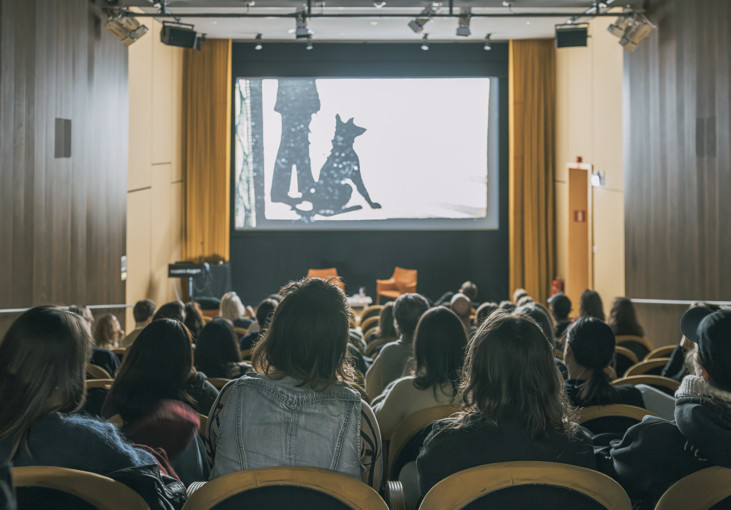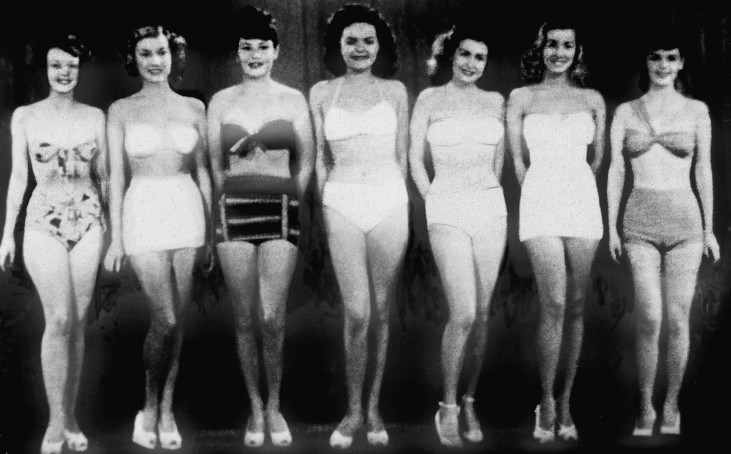
Carl Johan De Geer, Jag minns Lena Svedberg, 2000 © Carl Johan De Geer
The Film Club: Five Artist Portraits
29.11 2024
Stockholm
The Film Club: Five Artist Portraits
Anna Casparsson (1960) by Peter Weiss
A Portrait of Claes Oldenburg (1968) by Anders Wahlgren
Cowboy Russ (2003) by Tova Mozard
On Hospitality – Layla al Attar and Hotel al Rasheed (2024) by Behzad Khosravi Noori och Magnus Bärtås
Jag minns Lena Svedberg (2000) by Carl Johan De Geer
Date
Friday 29 November 2024
Time
18–19.50
Place
The Cinema, floor 2
Language
Swedish
Price
100 SEK, 50 SEK for members of the Film Club and Klubb Moderna
Contact: Camilla Carlberg
Anna Casparsson (13 min., 1960)
“The Film Club: Five Artist Portraits” starts off with Peter Weiss’s “Anna Casparsson” (1960), in which the 99-year-old artist is portrayed in her home, Villa Snäckan in Saltsjöbaden outside Stockholm. Anna Casparsson (1861–1961) is introduced through the music, the creative fingers moving over worn piano keys. In the searching camerawork of Weiss, Casparsson’s unique home environment is outlined piece by piece, as are the close and spiritual friends who surround her on the walls in the form of Ernst Josephson and Ludwig van Beethoven.

A Portrait of Claes Oldenburg (18 min., 1968)
The switch is turned on and a wobbling face appears. The artist depicted in Jell-O is a congenial grip in Anders Wahlgren’s film “A Portrait of Claes Oldenburg” (1968). The choice of the material Jell-O, the signature dessert of American junk culture by being both nutrient-poor and having a seductive surface, becomes an effective introduction to Oldenburg’s oeuvre, which dwells so strongly on and marvels at the rich symbolic world of the new American consumer culture.

In Tova Mozard’s film “Cowboy Russ” (2003) there is a surprising double portrait. We are in a narrowly cut cinematic frame, in which three physical walls are sharply marked off. In this viewing cabinet, we see the actor Russ Kingston engrossed in his apartment next to the dream factory’s roaring freeway. With complete precision and absolute empathy, Russ describes a memorable scene from the western film “The Magnificent Seven” (1960) and addresses the viewer through the fourth wall.

On Hospitality – Layla Al-Attar and Hotel Al Rasheed (18 min., 2024)
Behzad Khosravi Noori and Magnus Bärtås approach the Iraqi artist Layla Al-Attar with a slightly different method – necromancy. In the work “On Hospitality” (2024), Al-Attar returns from the dead to tell the unlikely story of how the Swedish cement and glass industry, on order from Saddam Hussein, built the luxury hotel Al Rasheed in the Baghdad desert in the early 1980s.

Jag minns Lena Svedberg (6 min., 2000)
(I remember Lena Svedberg)
In the films of Carl Johan De Geer, a strongly self-reflective theme often recurs, even in the portrait films that touch upon the relationship with important people in the artist’s absolute proximity. The films are merged into mirror images of the artist himself, the passage of time and the portrayed. “Jag minns Lena Svedberg” (2000) is a film about the artist colleague Lena Svedberg (1946–1972) who, together with De Geer, was a driving force in the magazine “Puss” (1968–1974).

Film Club: Five Artist Portraits presented in collaboration with Stiftelsen Filmform.
The film programme is curated by Andreas Bertman and Anna-Karin Larsson, Stiftelsen Filmform.
The Film Club
The Film Club features films and discussions. See films on the boundary between art and documentary. Often, the artist or director will take part in …
Films and discussions

Previous programme
Are you curious about what the Film Club has shown before? Here you find information about previous film clubs, from 2018 onwards. …
Previous programme

